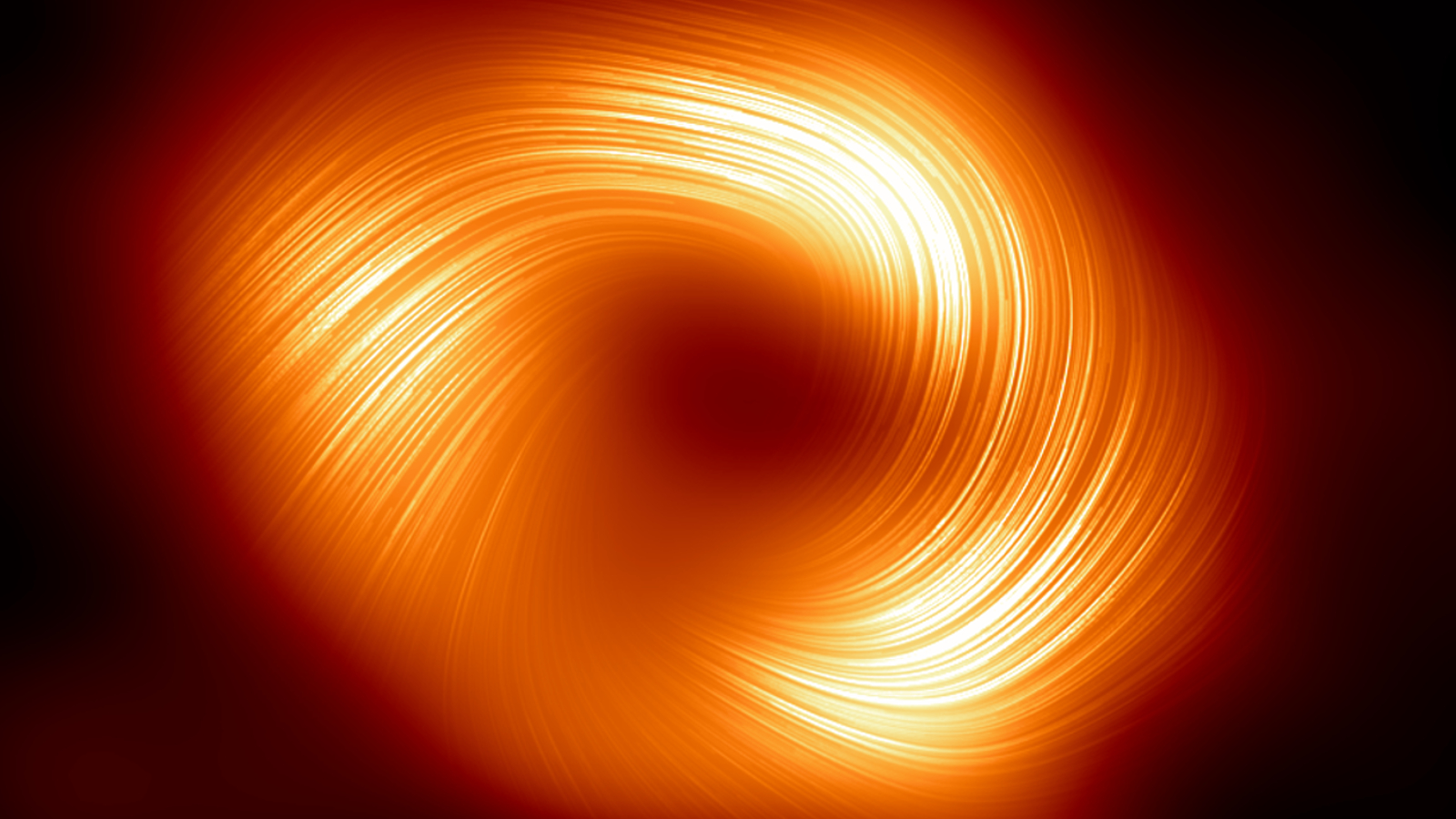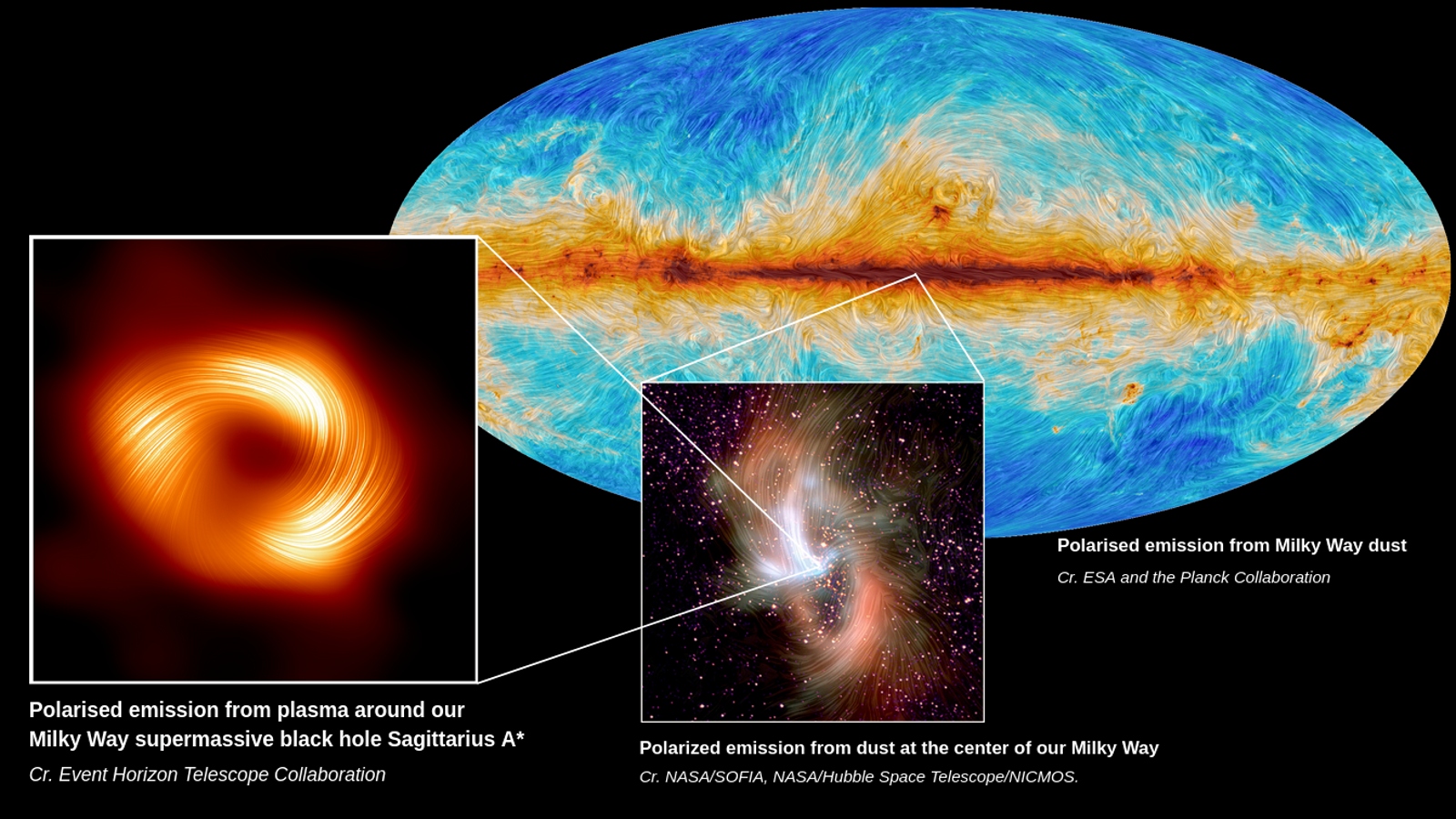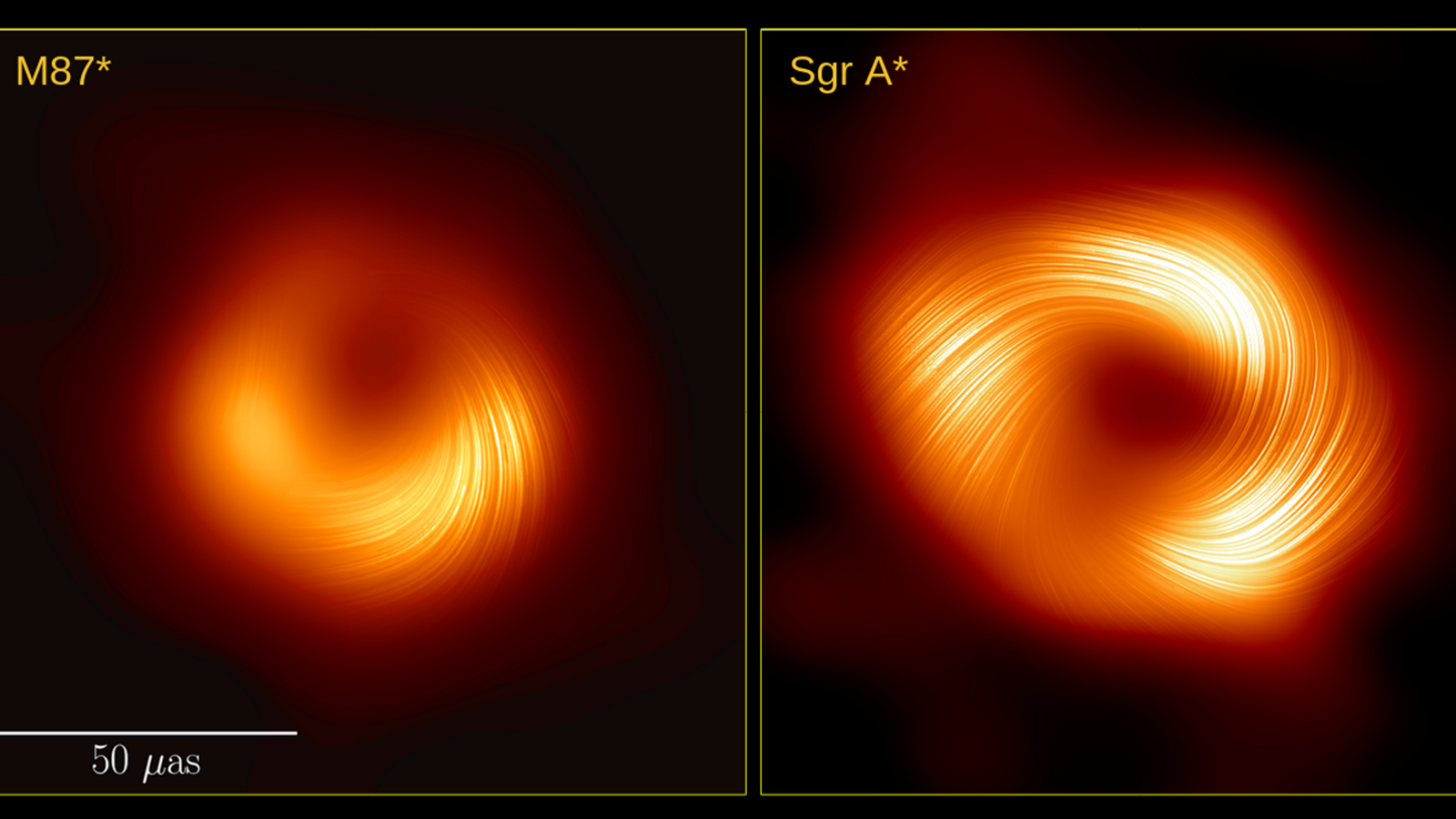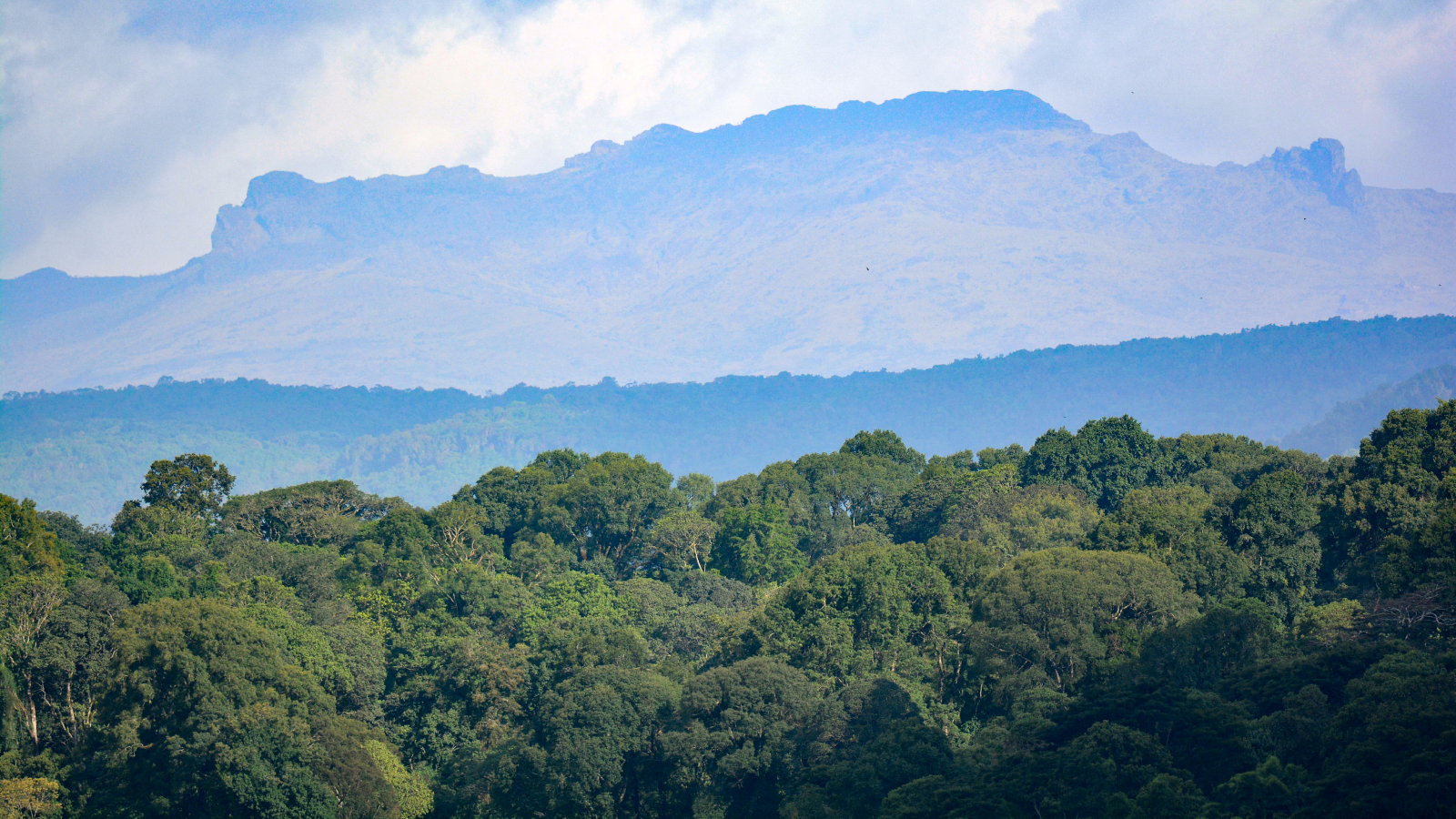Milky Way's monster black hole may be shooting superheated jets into our galaxy, groundbreaking images reveal
A new polarized light image of the supermassive black hole Sagittarius A* has given us our first clear look at the magnetic field of the cosmic juggernaut, which suggests that it may have superheated jets just like even larger black holes.

Mesmerizing new images of the supermassive black hole at the heart of the Milky Way reveal a first look at the matter-gobbling behemoth's magnetic field. The stunning snaps suggest that the cosmic void, named Sagittarius A* (Sgr A*), may be harboring hidden jets that are shooting superheated matter into our galaxy.
The new images were captured by the Event Horizon Telescope (EHT), an array of radio observatories around the globe that act as a single telescope, which captured the first-ever direct photo of Sgr A* back in 2022. Unlike previous images of the black hole, which is located around 27,000 light-years from the sun, the new shots were taken using polarized light. This type of light is made up of waves that vibrate in a single plane; the human eye cannot distinguish it from other light, but it can be picked up by radio telescopes.
Matter swirling around a black hole's event horizon — the point beyond which nothing, not even light, can escape the black hole's gravitational pull — emits a lot of polarized light, making it stand out in the new photos. This matter is mainly aligned along magnetic-field lines. As a result, scientists can use the new images as a de facto map of Sgr A*'s magnetic field, and they are surprised by how powerful it appears to be.
"What we're seeing now is that there are strong, twisted, and organized magnetic fields near the black hole at the center of the Milky Way galaxy," Sara Issaoun, an EHT astronomer at the Harvard & Smithsonian Center for Astrophysics, said in a statement. The researchers hope this discovery can help them learn more about how Sgr A* feeds on the matter encircling it, she added.
The initial findings were published March 27 in The Astrophysical Journal Letters.
One of the biggest surprises from the new study is how similar the new images look to the magnetic field of Messier 87* (M87*) — a black hole that's around 1,000 times larger than Sgr A* and located 53 million light-years away, in the Messier 87 galaxy.
Get the world’s most fascinating discoveries delivered straight to your inbox.
M87* became the first black hole to ever be directly photographed when the EHT snapped it in 2017. Since then, those photos have been enhanced by AI and been followed up with additional photos, including a polarized light snap that revealed the black hole's magnetic field.
Researchers had suspected that the inferior size of Sgr A* would mean its magnetic field would be much weaker and less organized than M87*'s. However, it appears this is not the case.
Considering the similarities between the two black holes, researchers also hope Sgr A* could harbor huge outflows of superheated matter, known as jets.
In April 2023, EHT captured the first-ever image of black hole jets around M87*, which were later found to be around 10 times longer than the Milky Way's diameter. Similar jets were also spotted by the EHT around the supermassive black hole at the heart of the galaxy NGC 1275, also known as Perseus A, this February.
Astrophysicists are particularly interested in black hole jets because they hold the secrets of how these cosmic juggernauts lose energy as they spin, which was previously thought to be impossible. Therefore, potentially having one of these jets in our own galaxy is extremely exciting.
If Sgr A* does sport jets as well, we will probably find out within the next decade as the EHT is expanded, the researchers wrote.

Harry is a U.K.-based senior staff writer at Live Science. He studied marine biology at the University of Exeter before training to become a journalist. He covers a wide range of topics including space exploration, planetary science, space weather, climate change, animal behavior and paleontology. His recent work on the solar maximum won "best space submission" at the 2024 Aerospace Media Awards and was shortlisted in the "top scoop" category at the NCTJ Awards for Excellence in 2023. He also writes Live Science's weekly Earth from space series.




